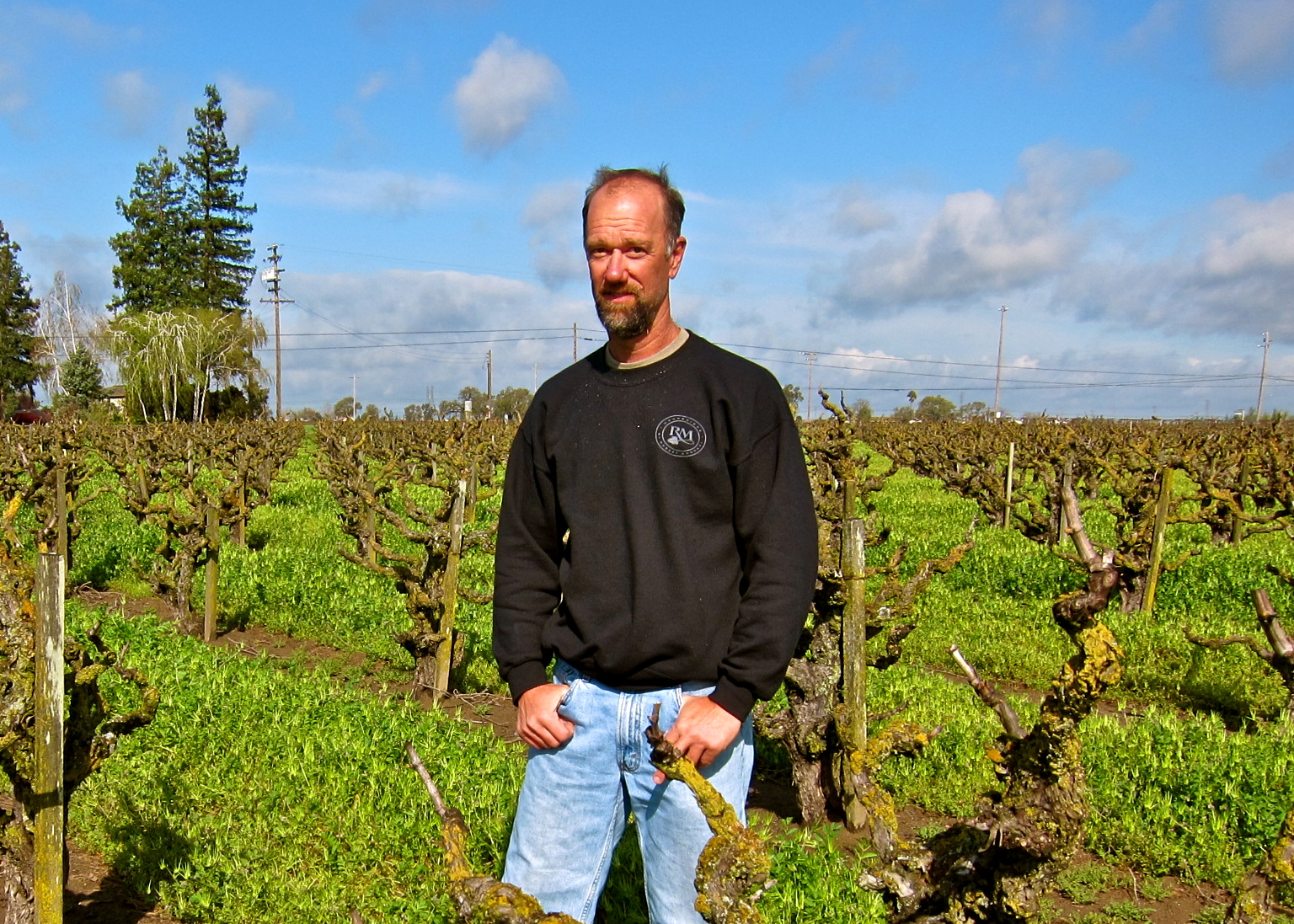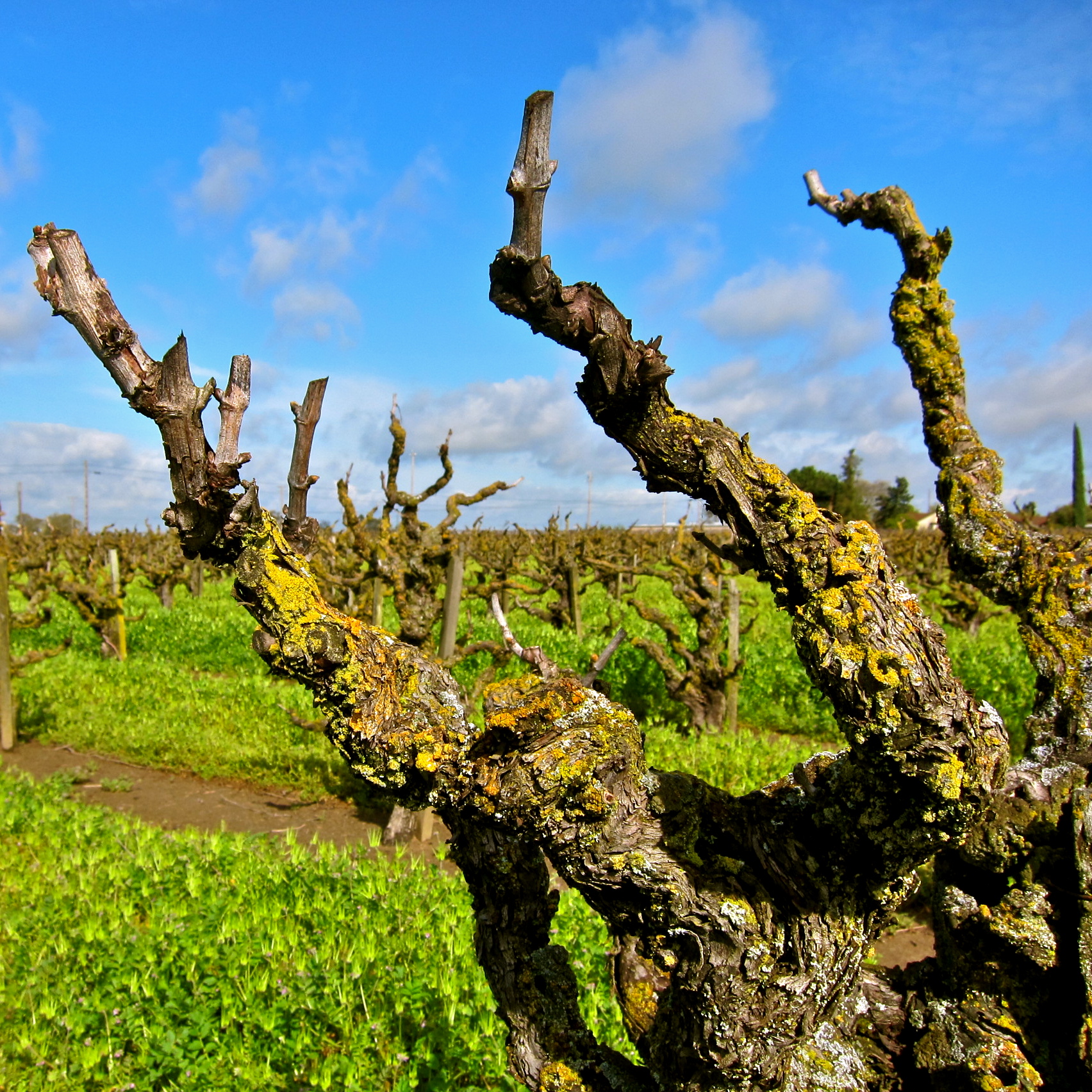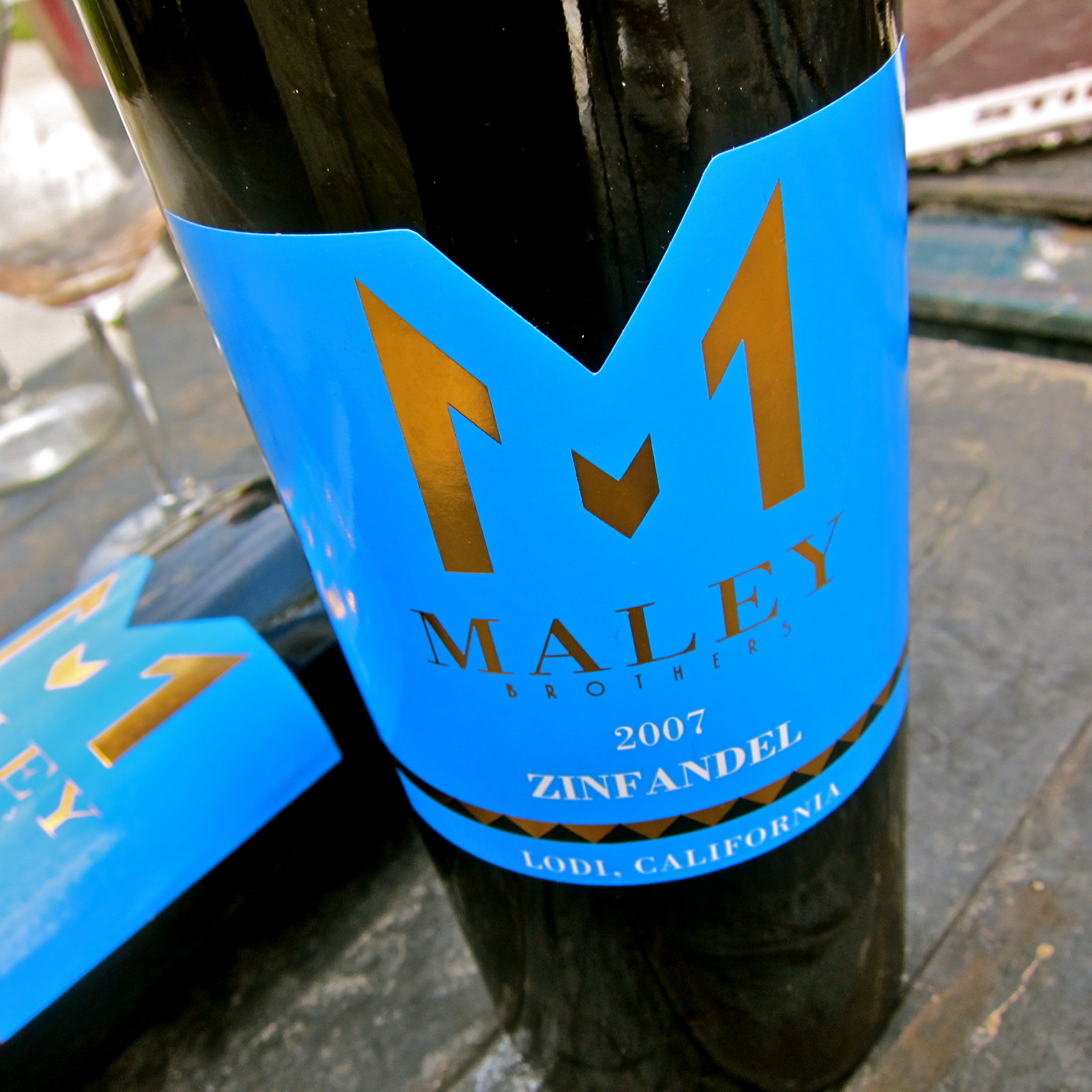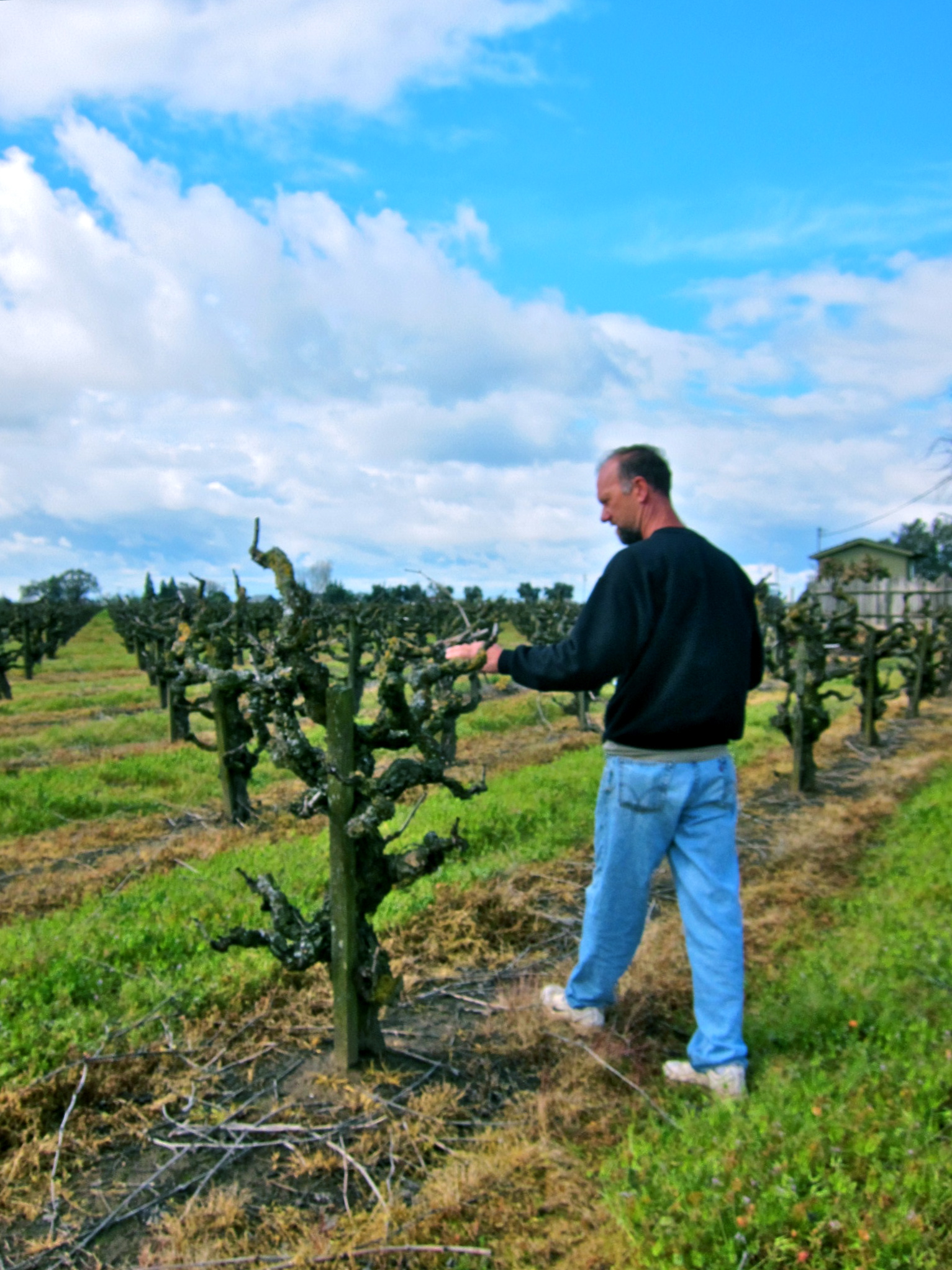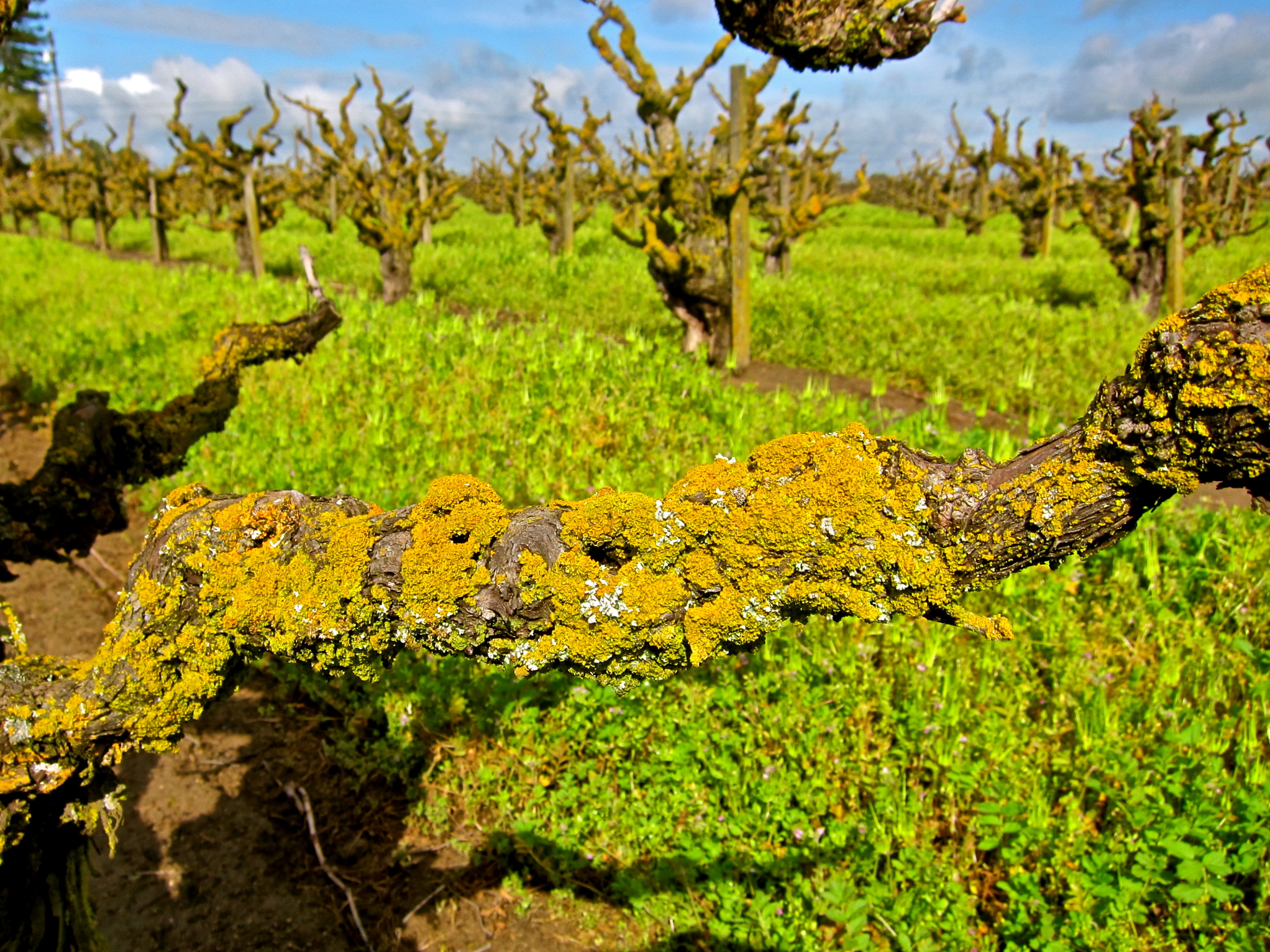Letters from Lodi
An insightful and objective look at viticulture and winemaking from the Lodi
Appellation and the growers and vintners behind these crafts. Told from the
perspective of multi-award winning wine journalist, Randy Caparoso.
The most voluptuous Lodi zin of all
Todd Maley among his prized, head trained old vine zins
Is there such a thing as a “classic” Lodi Zinfandel? Good question, because in many cases, the style of a winemaker or winery certainly does trump sensory qualities often associated with vineyard sites.
Michael~David’s Earthquake Zinfandel, for example, has become somewhat iconic: consistently black as night, big in alcohol, muscular in tannin, and yes, as strongly oaked (pungent vanillin/smoky aromas and flavors) as they are in richly ripened, jammy mixes of black and red berry fruitiness. At the almost opposite end of the scale, Michael~David’s 7 Deadly Zins is usually fairly light and soft, lower in tannin and oak, with an emphasis on sweet spice notes (cinnamon/clove) to go along with the berry jamminess. “Winemaker” driven wines, as opposed to anything defined by terroir or “sense of place” — each, needless to say, perfectly delicious for what they are.
Yet there are certain vineyards in Lodi that can remain very expressive of themselves, no matter how much influence a winemaker exerts on the growing, picking, vinification and aging of the subsequent wine. Earlier this week, during a sunny break between our incessant rains (winter, thou hast overstayed thy welcome), we took a stroll with grower Todd Maley through his family’s Maley Vineyards, one of the original “7 Deadly” grape sources that were turned into an international sensation by Michael~David.
Although Michael~David no longer does single vineyard bottlings from Maley, in the eyes of many a Lodi wine lover the character of zin from this planting on the west side of Lodi (stretching from N. Ray Rd. to just past N. Devries, south of Woodbridge) is still iconic: plump, juicy, fruit forward styles of Zinfandel, almost always verging on the dried berry/cherry side of the varietal character, along with variations of earthy/loamy/organic notes, unfailingly perceivable in the nose. In fact, Maley sourced zins usually have an earthiness rarely found elsewhere in Lodi, except for those coming in even stronger waves from the nearby Soucie Vineyard, north of Turner at the edge of the Delta. Dialing in with more specifics:
2007 Maley Brothers, Lodi Zinfandel ($18) – Sweet, juicy, primary fruit nose suggesting dried cherries with a faint backdrop of loamy earthiness; zesty, medium bodied feel, the berry flavors becoming piquant, almost cranberryish, forward and easy on the palate.
2009 Macchia, Voluptuous Lodi Old Vine Zinfandel ($24) – Sourced 100% from Maley Vineyard, sweet blackberry liqueur-like aroma with black peppery spice and pretty distinct loamy/earthy notes; fuller bodied, with a velvety feel on the palate, delivering blackberry and black cherry flavors in broad, generous strokes, layered over firming tannin and oak underpinnings.
According to Todd Maley, who has been managing the family’s 340 acre property with his father Joe and uncle Lou since coming out of San Diego State in 1987, Maley Vineyards’ oldest stands of classic head trained Zinfandel (planted in ’58) have grown to “pretty much manage themselves,” although there is considerable shoot and bunch thinning in sections where richer soils seem to push the old guys beyond acceptable quality ranges (which would be below 5 tons per acre).
Yet right next to one cluster of gnarly armed, lichen crusted vines that usually set more than 6 tons of fruit, there is another cluster of vines that will barely yield a ton and a half, year in and year out. Vines that were all planted at the same time on the same rootstock (St. George), and trained in the same way with 12 to 18 vertically rising spurs. “We cannot be certain if there is much of a soil difference that causes one vine to produce just 3 or 4 bunches, and one right next to it to produce more than a dozen bunches. This is all classic Tokay sandy loam in this vineyard, so there’s probably not a lot of soil variation.
“We do know that there is a variety of different nematodes that probably restrict growth in some sections, and if we restrict water too much (Maley practices underground deficit irrigation) the nematodes really become an issue. Yet we obviously never want to water more than we have to, because we get the higher quality grapes when we limit canopy growth, and we do that by withholding water.”
As it were, it is the least vigorous vines (just over a ton per acre) that Mr. Maley reserves for the bottling of his own Maley label Zinfandel — not that much, only about 200 cases a year (“I’ll be the first to tell you that I’m more a farmer than a winemaker,” he admits, “and I’d rather spend more time with my sons, Reid and Blair, than messing around with barrels”) — and it’s the prized sections along Ray Rd., normally yielding about 4 tons, that goes to the boutique sized producers like Macchia, m2 (usually blended into their Artist Series zins), and Akin.
It’s Maley’s opinion that “the lower the yield, the higher the quality of the grape and wine.” But he also adds, “the vines that give just 1 ton do not produce wines that are four times better than vines producing 4 tons. In my experience, the difference is just slight.”
David Akin is Maley’s consulting winemaker, and between the two of them, the preferred picking level for their version of Maley Zinfandel is below 25° Brix; and grapes picked at that sugar level usually yield wines of relatively moderate size, barely above 14% alcohol. Both Macchia and m2, on the other hand, pick more on the basis of flavor development — or “physiological ripeness,” in winemaker lingo — and so often grapes don’t go to those wineries until the grapes have reached 27° or even 28° Brix (resulting in wines closer to 15% to +16% alcohol).
“No winemaker really wants to pick grapes past 25°,” says Holdener at Macchia, “because higher alcohol can throw off the balance of a Zinfandel. But at the same time we’ll let our fruit ripen more because that’s when we get the flavors that distinguish the vineyard. I call my Maley Zinfandel Voluptuous because that’s what it is when it really gets going — something really rich, round, soft, approachable… voluptuous. Very different from Zinfandel I get from the Noma Vineyard on the other side of Lodi, east of 99, which are more structured, higher in acid, and usually fuller in tannin.”
Fact of the matter is, there is something of a voluptuousness even in the moderated alcohol style of Zinfandel made for Maley by Akin — it’s just not so obvious or (depending upon your point of view) overweening, compared to Macchia’s fuller style. Look at it this way: many would say a woman is much more beautiful when wearing a minimum of makeup, or none at all. But who is going to argue the fact that the majority of women (even the natural beauties) probably look better with makeup, and lots of it? The ladies at your friendly neighborhood Clinique counter wouldn’t disagree, and neither would a good number of true blue, purple stained toothed Lodi zin lovers!
